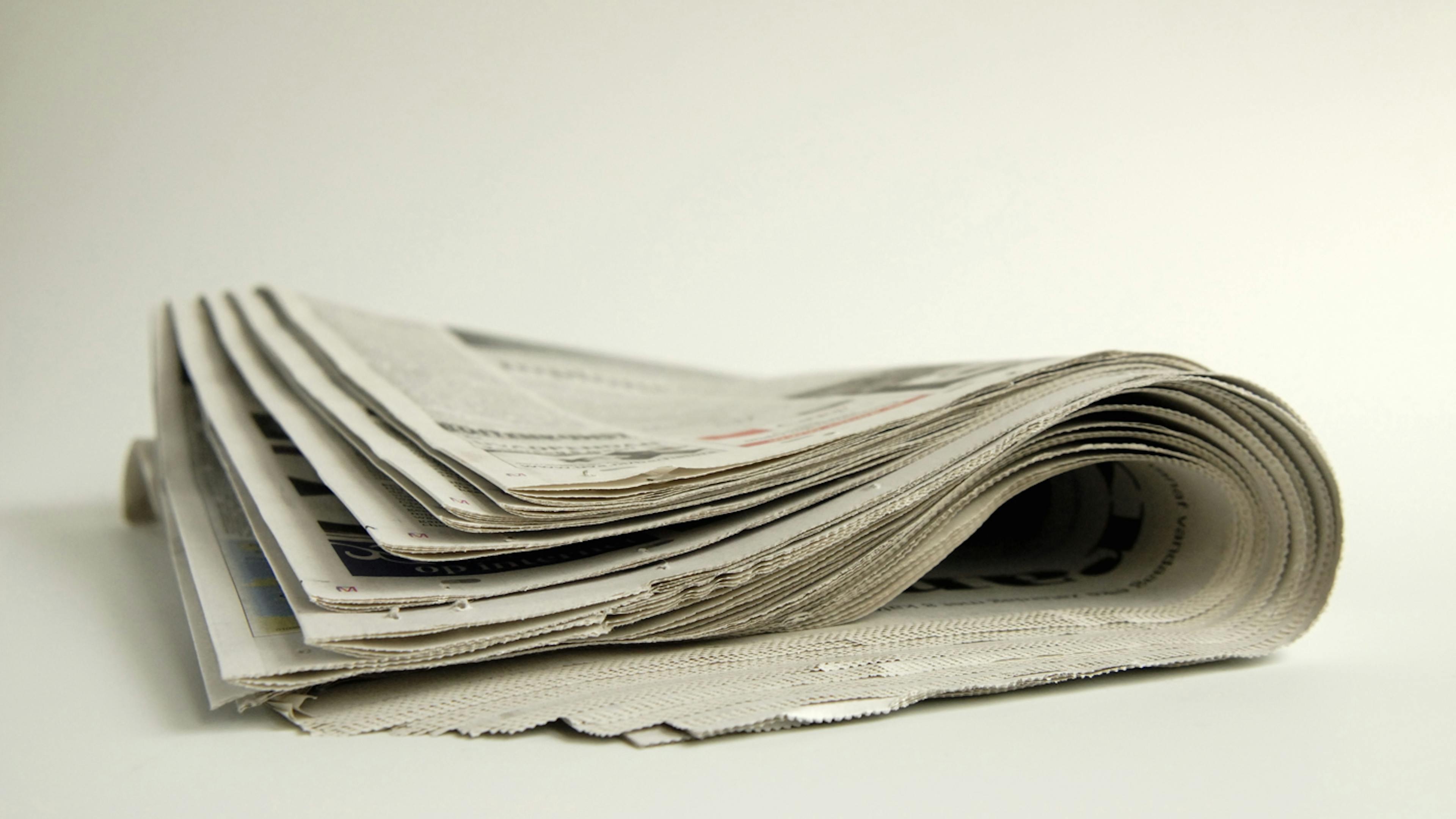
Carmignac Portfolio Patrimoine Europe: Letter from the Fund Manager
Carmignac Portfolio Patrimoine Europe A EUR Acc lost -4.86% in the first quarter of 2022, below the -4.43% of its reference indicator¹.
Quarterly Performance Review
The beginning of 2022 witnessed a shift in equity/bond correlation. With the deceleration of global growth, threats of persistent inflation, and the more hawkish stance adopted by developed Central banks, government/corporate bonds and equity markets have entered a bearish momentum simultaneously. Under these circumstances, bonds are no longer as effective a hedge for equities as they have been over the past 20 years. The disinflationary environment where central banks could expand money supply without any consequences seems over, this is what the markets have been showing us since the beginning of the year, even before Russia invaded Ukraine.
In this context, Carmignac Patrimoine Europe started the year with a conservative portfolio. The exposure to risky assets was low, with 25% net exposure to equities and 5% to credit, and the level of cash was already over 40%. However, despite a prudent positioning, the first few weeks of the year were challenging. The underperformance of our underlying stock picking was due to a prolonged factor rotation in the market, away from high quality but highly rated names that we own, into lower quality so-called value stocks in the bank and commodity sectors where we have no exposure. Investors appeared obsessed by inflation while they refused to look at the decelerating growth expectations and didn’t make much of strong earnings. While contributing positively to returns our factor risk mitigation strategies did not allow to fully compensate historical gaps between value & growth, cyclical & defensives, commodities & visibility. At the end of January, given 1) the high level of uncertainties, 2) the growing stagflation risk which was not priced by the market, 3) a context where both the ECB and the Fed were focusing mainly on the upside inflation risks: the portfolio managers decided to adopt a very defensive approach. They drastically reduced the exposure to equities, added credit market protections, while actively managing the modified duration of the fund. They also initiated a position in gold for portfolio construction purposes and for its safe-haven status while maintaining a large amount of cash in the portfolio. This switch to "capital preservation" mode allowed us, similarly to 2018 and March 2020, to resist the new sell-off in both bond and stock markets.
Conversely, in the second half of March, the fund maintained its defensive positioning despite a more positive backdrop for European equities on the back of signs of 'progress' in Russia-Ukraine talks. Russia's invasion of Ukraine has been unsettling markets and adding to lingering concerns about persistently rising inflation and global economic growth. There is a sense of hope in the market that a resolution is near and therefore could remove some of the worst-case scenarios. Nevertheless, we think that the resolution will not solve the fundamental problem that caused a decline in the markets at the beginning of the year - namely high inflation, central bank response or possibly a coming recession - which is why we have remained cautious in our positioning.
Our Positioning and Outlook
While we expect headline inflation to come down over the next months, we expect core inflation (driven by wage growth and housing) in the US to continue to be stubbornly high, leading to an ongoing hawkish perspective of the Federal Reserve. Likewise, the willingness to reduce reliance on historical trading partners and energy sources will come at a higher cost. Covid lockdowns could also further affect international trade, as was recently the case with the identification of new cases in Shenzhen, the world’s fourth largest container port and China’s fourth largest airport for cargo. Meanwhile, growth which was already slowing is expected to slow even further, notably in Europe, where the high energy-driven inflation is considerably weighing on consumers’ willingness to spend and company’s margins. The dynamics at play, associated with the Russo-Ukrainian conflict and sanctions, pose the risk of a stagflation - i.e. an economic slowdown coupled with high inflation - and even a risk of recession.
In the short term we remain prudent, considering the extraordinary amount of volatility, but believe this level of dispersion in the market will provide good opportunities. We see this current environment as very challenging and clearly painful from a performance standpoint, but also a big driver of upcoming opportunities for our strategy with names losing more than 20% since the beginning of the year while the fundamentals remain very attractive. Consequently, we remain committed to our core equity holdings, which are winners in their respective fields. Given the context, we added/increased our defensive exposure which is still focused on quality names particularly within Health Care, such as Novo Nordisk or Roche, so to, at least partially, address the current environment. Additionally, earlier in the year, we had reduced more extreme growth names (exited Delivery Hero, reduced some recent IPOs). A continuous monitoring of the portfolio and focus on risk management are also fundamentals tools when dealing with European equities.
Over the long-term, the prospects are more hopeful. Fiscal support could alleviate the worst of energy-price inflation, and over a medium-term horizon we expect inflation to fall back to a level that’s higher than pre-pandemic levels but not beyond the tipping point that makes it negative for equities. As rising rates and rising costs put pressure on consumer budgets and companies margins worldwide over the coming months, the best place to be is in proven quality secular growth stocks that have a better ability to sustain profitability and growth. Similarly, we took advantage of the dislocation of credit and equities markets to cherry-pick some idiosyncratic stories and build the future return potential of the portfolio. Thanks to the macro overlay and risk management strategies, we could build exposure to these promising sectors without increasing the short-term risk level of the fund.

Carmignac Portfolio Patrimoine Europe
Fund built to take advantage of Europe’s many sectors and opportunities.Discover the fund pageCarmignac Portfolio Patrimoine Europe A EUR Acc
- Durée minimum de placement recommandée
- 3 ans
- Indicateur de risque*
- 3/7
- Classification SFDR**
- Article 8
*Echelle de risque du KID (Document d’Informations Clés). Le risque 1 ne signifie pas un investissement sans risque. Cet indicateur pourra évoluer dans le temps. **Le Règlement SFDR (Sustainable Finance Disclosure Regulation) 2019/2088 est un règlement européen qui demande aux gestionnaires d’actifs de classer leurs fonds parmi notamment ceux dits : « Article 8 » qui promeuvent les caractéristiques environnementales et sociales, « Article 9 » qui font de l’investissement durable avec des objectifs mesurables, ou « Article 6 » qui n'ont pas nécessairement d'objectif de durabilité. La classification SFDR des Fonds peut évoluer dans le temps. Pour plus d’informations, visitez : https://eur-lex.europa.eu/eli/reg/2019/2088/oj?locale=fr.
Principaux risques du Fonds
Performances
| Carmignac Portfolio Patrimoine Europe | -4.8 | 18.7 | 13.9 | 9.5 | -12.7 | 2.1 |
| Indicateur de référence | -4.8 | 16.4 | 2.4 | 10.2 | -11.0 | 9.5 |
| Carmignac Portfolio Patrimoine Europe | - 0.8 % | + 3.8 % | + 4.4 % |
| Indicateur de référence | + 1.7 % | + 3.2 % | + 3.7 % |
Source : Carmignac au 29 nov. 2024.
Les performances passées ne préjugent pas des performances futures. Elles sont nettes de frais (hors éventuels frais d’entrée appliqués par le distributeur).
Articles associés

Carmignac Patrimoine célèbre ses 35 ans

Carmignac renforce l’équipe de Gestion de Patrimoine et sa Direction Générale

Grand prix de la Gestion d’Actifs pour notre stratégie patrimoniale
COMMUNICATION PUBLICITAIRE. Veuillez vous référer au KID/prospectus avant de prendre toute décision finale d’investissement. Ce document est destiné à des clients professionnels.
Le présent document ne peut être reproduit en tout ou partie, sans autorisation préalable de la Société de gestion. Il ne constitue ni une offre de souscription ni un conseil en investissement. Ce document n’est pas destiné à fournir, et ne devrait pas être utilisé pour des conseils comptables, juridiques ou fiscaux. Il vous est fourni uniquement à titre d’information et ne peut être utilisé par vous comme base pour évaluer les avantages d’un investissement dans des titres ou participations décrits dans ce document ni à aucune autre fin. Les informations contenues dans ce document peuvent être partielles et sont susceptibles d’être modifiées sans préavis. Elles se rapportent à la situation à la date de rédaction et proviennent de sources internes et externes considérées comme fiables par Carmignac, ne sont pas nécessairement exhaustives et ne sont pas garanties quant à leur exactitude. À ce titre, aucune garantie d’exactitude ou de fiabilité n’est donnée et aucune responsabilité découlant de quelque autre façon pour des erreurs et omissions (y compris la responsabilité envers toute personne pour cause de négligence) n’est acceptée par Carmignac, ses dirigeants, employés ou agents.
Les performances passées ne préjugent pas des performances futures. Elles sont nettes de frais (hors éventuels frais d’entrée appliqués par le distributeur).
Le rendement peut évoluer à la hausse comme à la baisse en raison des fluctuations des devises, pour les actions qui ne sont pas couvertes contre le risque de change.
La référence à certaines valeurs ou instruments financiers est donnée à titre d’illustration pour mettre en avant certaines valeurs présentes ou qui ont été présentes dans les portefeuilles des Fonds de la gamme Carmignac. Elle n’a pas pour objectif de promouvoir l’investissement en direct dans ces instruments, et ne constitue pas un conseil en investissement. La Société de Gestion n'est pas soumise à l'interdiction d'effectuer des transactions sur ces instruments avant la diffusion de la communication. Les portefeuilles des Fonds Carmignac sont susceptibles de modification à tout moment.
La référence à un classement ou à un prix ne préjuge pas des classements ou des prix futurs de ces OPC ou de la société de gestion.
La durée minimum de placement recommandée équivaut à une durée minimale et ne constitue pas une recommandation de vente à la fin de ladite période.
Morningstar Rating™ : © Morningstar, Inc. Tous droits réservés. Les informations du présent document : -appartiennent à Morningstar et / ou ses fournisseurs de contenu ; ne peuvent être reproduites ou diffusées ; ne sont assorties d'aucune garantie de fiabilité, d'exhaustivité ou de pertinence. Ni Morningstar ni ses fournisseurs de contenu ne sont responsables des préjudices ou des pertes découlant de l'utilisation desdites informations.
L’accès au Fonds peut faire l’objet de restriction à l’égard de certaines personnes ou de certains pays. Le présent document ne s’adresse pas aux personnes relevant d’une quelconque juridiction où (en raison de la nationalité ou du domicile de la personne ou pour toute autre raison) ce document ou sa mise à disposition est interdit(e). Les personnes auxquelles s’appliquent de telles restrictions ne doivent pas accéder à ce document. La fiscalité dépend de la situation de chaque personne. Les fonds ne sont pas enregistrés à des fins de distribution en Asie, au Japon, en Amérique du Nord et ne sont pas non plus enregistrés en Amérique du Sud. Les Fonds Carmignac sont immatriculés à Singapour sous la forme d’un fonds de placement de droit étranger réservé aux seuls clients professionnels. Les Fonds ne font l’objet d’aucune immatriculation en vertu du US Securities Act de 1933. Le fonds ne peut être proposé ou vendu, directement ou indirectement, au bénéfice ou pour le compte d’une « US person » au sens de la réglementation S américaine et du FATCA.
La décision d’investir dans le(s) fonds promu(s) devrait tenir compte de toutes ses caractéristiques et de tous ses objectifs, tels que décrits dans son prospectus. Les risques et frais relatifs aux Fonds sont décrits dans le KID (Document d’informations clés). Le KID doit être tenu à disposition du souscripteur préalablement à la souscription. Le souscripteur doit prendre connaissance du KID. Les investisseurs peuvent perdre tout ou partie de leur capital, attendu que les Fonds n’offrent pas de garantie de capital. Tout investissement dans les Fonds comporte un risque de perte de capital.
Carmignac Portfolio désigne les compartiments de la SICAV Carmignac Portfolio, société d’investissement de droit luxembourgeois conforme à la directive OPCVM. Les Fonds sont des fonds communs de placement de droit français conformes à la directive OPCVM ou AIFM. La société de gestion peut décider à tout moment de cesser la commercialisation dans votre pays.
En Suisse : Le prospectus, KID, et les rapports annuels des Fonds sont disponibles sur le site www.carmignac.ch et auprès de notre représentant en Suisse (Switzerland) S.A., Route de Signy 35, P.O. Box 2259, CH-1260 Nyon. Le Service de Paiement est CACEIS Bank, Montrouge, succursale de Nyon / Suisse Route de Signy 35, 1260 Nyon. Les investisseurs peuvent avoir accès à un résumé de leurs droits en français sur le lien suivant à la section 6 intitulée "Résumé des droits des investisseurs".
En France : Le prospectus, les KID, la VL et les rapports annuels des Fonds sont disponibles sur www.carmignac.fr, ou sur demande auprès de la Société de gestion. Les investisseurs peuvent avoir accès à un résumé de leurs droits en français sur le lien suivant à la section 6 intitulée "Résumé des droits des investisseurs"
Au Luxembourg : Le prospectus, les KID, la VL et les rapports annuels des Fonds sont disponibles sur www.carmignac.lu, ou sur demande auprès de la Société de gestion. Les investisseurs peuvent avoir accès à un résumé de leurs droits en français sur le lien suivant à la section 6 intitulée "Résumé des droits des investisseurs".